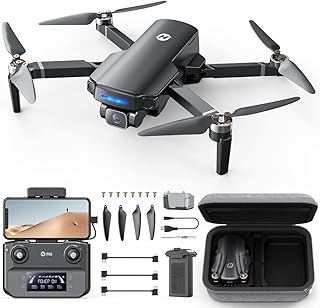The Economic Impact of Drones: Creating New Industries
Drones, or unmanned aerial vehicles (UAVs), have exploded onto the scene in recent years, revolutionizing numerous industries and creating a plethora of economic opportunities. Their versatility, cost-effectiveness, and efficiency have sparked innovation and opened doors to entirely new markets.
Here's a look at how drones are shaping the economy:
1. Creating New Industries:
* Drone Delivery: Companies like Amazon, FedEx, and UPS are investing heavily in drone delivery systems, promising faster, more efficient, and potentially cheaper delivery services. This is creating new jobs in drone manufacturing, software development, and logistics management.
* Drone Tourism: Drones are used for aerial photography and videography, offering unique perspectives for tourists and travel enthusiasts. This is fostering growth in drone-related tourism businesses, including drone tour operators, aerial photography services, and drone rental companies.
* Drone-as-a-Service (DaaS): This growing market offers drone services for various industries, including inspection, surveillance, data collection, and mapping. This is creating opportunities for drone operators, data analysts, and service providers.
2. Transforming Existing Industries:
* Agriculture: Drones are used for crop monitoring, spraying pesticides, and precision farming, increasing efficiency and reducing costs for farmers. This is driving innovation in agricultural technology and creating demand for drone specialists and agricultural data analysts.
* Construction: Drones are employed for site inspections, surveying, and mapping, allowing for faster and more accurate data acquisition. This is streamlining construction projects and creating new jobs in drone operation, data processing, and 3D modeling.
* Energy: Drones are utilized for inspecting power lines, pipelines, and wind turbines, ensuring safety and reducing maintenance costs. This is leading to the development of specialized drone technologies for the energy sector and creating new roles in drone maintenance and data analysis.
3. Economic Benefits:
* Job Creation: The drone industry is rapidly expanding, creating jobs in manufacturing, software development, operations, maintenance, and data analysis.
* Increased Efficiency: Drones are automating tasks, leading to increased efficiency and productivity across various industries.
* Reduced Costs: By automating tasks and reducing labor costs, drones are helping businesses lower expenses and increase profitability.
* Innovation and Research: The rapid development of drone technology is fostering innovation and research in various fields, leading to advancements in AI, robotics, and data analysis.
4. Challenges and Considerations:
* Regulations and Safety: Governments worldwide are developing regulations to ensure safe and responsible drone operation.
* Privacy Concerns: The use of drones for surveillance raises privacy concerns that need to be addressed.
* Cybersecurity: Drones are vulnerable to hacking and cyberattacks, requiring strong cybersecurity measures.
* Job Displacement: Automation by drones could potentially lead to job displacement in some sectors.
Conclusion:
The economic impact of drones is undeniable, creating new industries, transforming existing ones, and fostering innovation. While challenges remain, the potential of this technology is vast, offering tremendous opportunities for economic growth and societal progress. As drone technology continues to evolve, its impact on the global economy will only become more profound.


